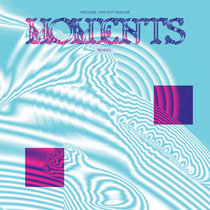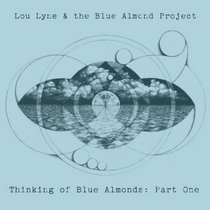
Analogies of Control
by Rick Nance
about
Analogies of Control
for cello and fixed sounds
1. Bell Crawler
2. SlipIn
3. Skimming
4. 999 Parables
5. The First Minute
6. The Last Three Minutes
Alternatives to control
Analogies of Control is the second realization of the aural model approach. It is a mixed work for fixed sounds and instrumentalist. In some ways Analogies of Control is more typical to instrument and fixed sound works in which the performer reads a score written to integrate with the electroacoustic part. However this work, by approaching the instrumental part of the composition as plastic, allows both parts to be created as a singular work of plastic art. It is only after the work is finished that the part to be performed and the part to be diffused are separated. In fact, one important aspect of the piece is that it can be presented acousmatically, that is, with no performer, using the un-separated original in diffusion. These two aspects of the work introduce a kind of open form not explored before now.
The parts that were to be later separated and used as an aural model for the cellist were made from the same source objects that the cello studies used; heat activated metals. The rest of the piece is built from cello sounds and their electroacoustic derivations. I used various approaches with the instrument as a sound source, including standard practice bowing all the way to a complete physical dismantling of the instrument and ‘playing’ its separated parts. Tuning pegs were bounced on the body and fingerboard, strings were drawn through the f-holes. Bow and pegs were swirled across the back of the body. Strings were twisted against themselves and resin was crushed and sprinkled across the body. Some improvisations on cello by Craig Hultgren also were included as sources.
It is important to stress, that during the course of creating the work, little regard was made as from where the sources came. The extraction into model (score) and accompaniment (diffused) happened after the fact. Three tracks are made with two being diffused to the audience and the model delivered to the cellist via headphones. Just as in the Parables, no one but the cellist hears the electroacoustic model. For the audience that means that what is heard is sound either made of or made from a cello. The audience doesn’t hear the original composition as it was made as I, the composer, heard it. It has, as Eco might suggest, been put out of joint. The cellist reassembles the work according to his own reading of it.
The end result of this process is that the audience hears a performance of acoustic cello and cello-derived plastic sound.
Performance advice
I have asked the cellist to choose his own order for the movements. Figure 2 is included with the sound files and the sound files’ designated channels. The performance of the work should include a diffusionist rather than a passive playback of the accompaniment.
1. Bell Crawler
2. SlipIn
3. Skimming
4. 999 Parables
5. The First Minute
6. The Last Three Minutes
Alternatives to control
Analogies of Control is the second realization of the aural model approach. It is a mixed work for fixed sounds and instrumentalist. In some ways Analogies of Control is more typical to instrument and fixed sound works in which the performer reads a score written to integrate with the electroacoustic part. However this work, by approaching the instrumental part of the composition as plastic, allows both parts to be created as a singular work of plastic art. It is only after the work is finished that the part to be performed and the part to be diffused are separated. In fact, one important aspect of the piece is that it can be presented acousmatically, that is, with no performer, using the un-separated original in diffusion. These two aspects of the work introduce a kind of open form not explored before now.
The parts that were to be later separated and used as an aural model for the cellist were made from the same source objects that the cello studies used; heat activated metals. The rest of the piece is built from cello sounds and their electroacoustic derivations. I used various approaches with the instrument as a sound source, including standard practice bowing all the way to a complete physical dismantling of the instrument and ‘playing’ its separated parts. Tuning pegs were bounced on the body and fingerboard, strings were drawn through the f-holes. Bow and pegs were swirled across the back of the body. Strings were twisted against themselves and resin was crushed and sprinkled across the body. Some improvisations on cello by Craig Hultgren also were included as sources.
It is important to stress, that during the course of creating the work, little regard was made as from where the sources came. The extraction into model (score) and accompaniment (diffused) happened after the fact. Three tracks are made with two being diffused to the audience and the model delivered to the cellist via headphones. Just as in the Parables, no one but the cellist hears the electroacoustic model. For the audience that means that what is heard is sound either made of or made from a cello. The audience doesn’t hear the original composition as it was made as I, the composer, heard it. It has, as Eco might suggest, been put out of joint. The cellist reassembles the work according to his own reading of it.
The end result of this process is that the audience hears a performance of acoustic cello and cello-derived plastic sound.
Performance advice
I have asked the cellist to choose his own order for the movements. Figure 2 is included with the sound files and the sound files’ designated channels. The performance of the work should include a diffusionist rather than a passive playback of the accompaniment.
credits
released June 8, 2015
tags
about
Rick Nance Leicester, UK
Sonic arts by ear, design and improvisation.
Some acousmatic, some not.
From the Southeast U.S. and now in the Midlands of England.
=========
RickNance.org
PlasticMusic.net
contact / help
Rick Nance recommends:
If you like Rick Nance, you may also like:
















